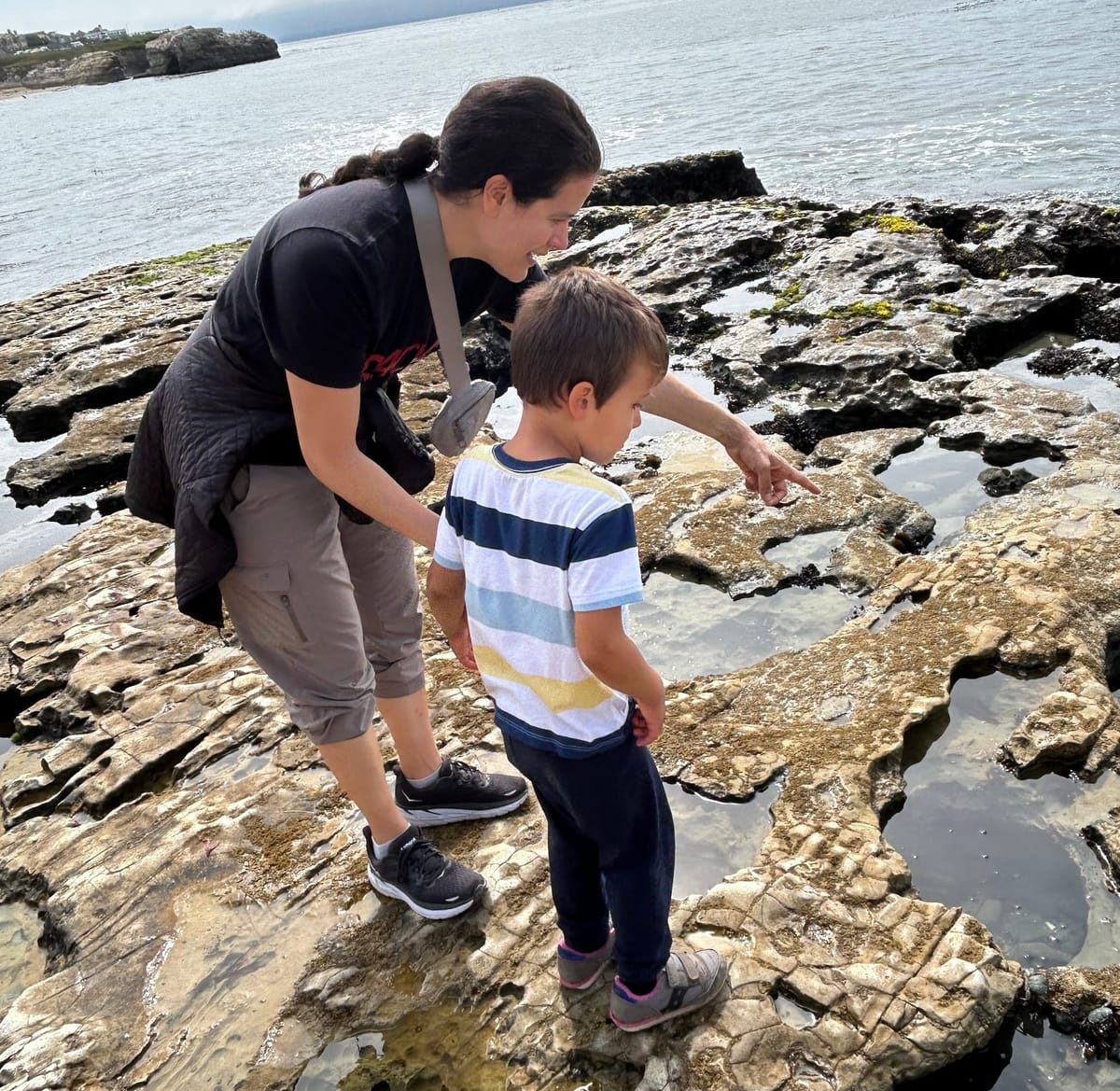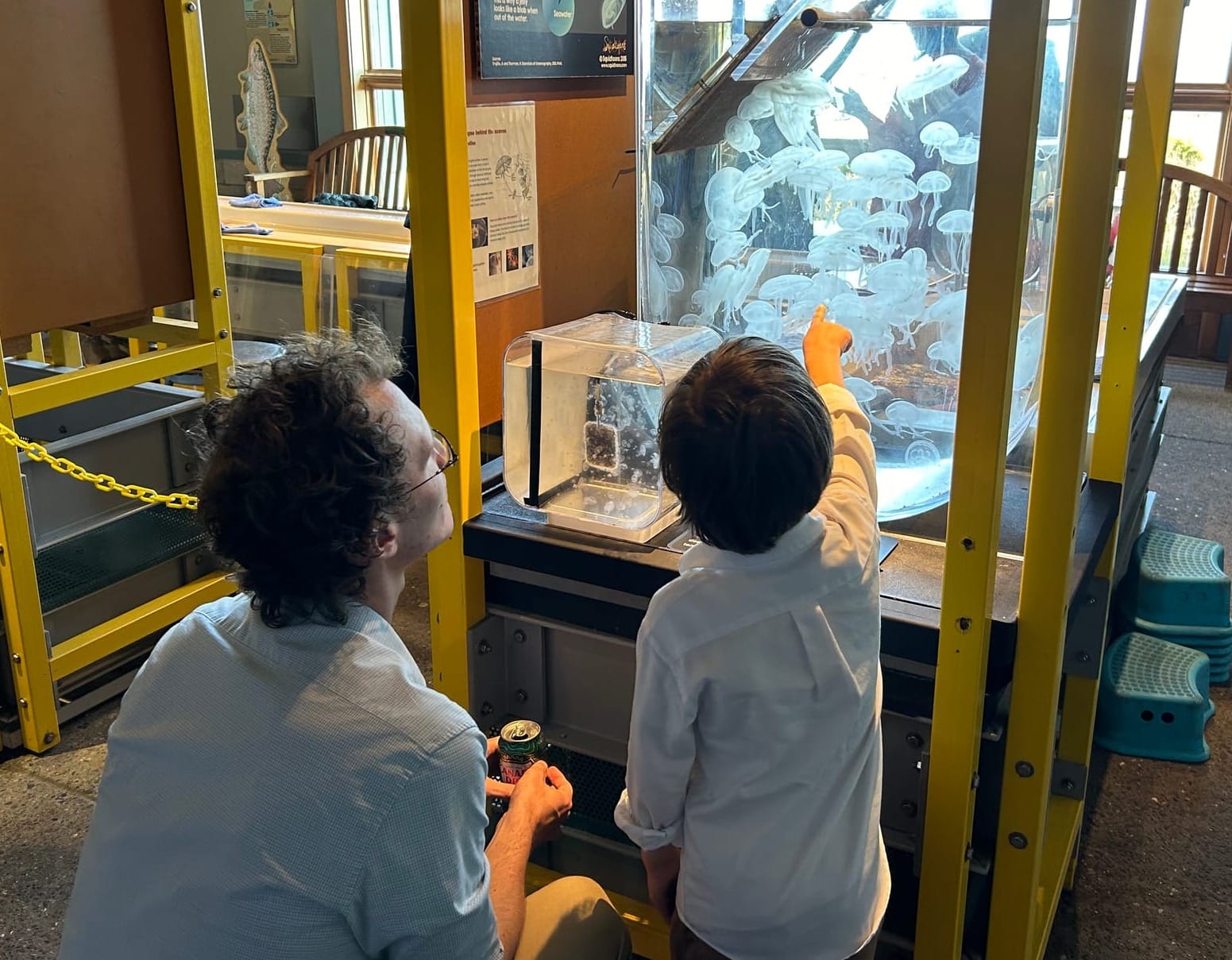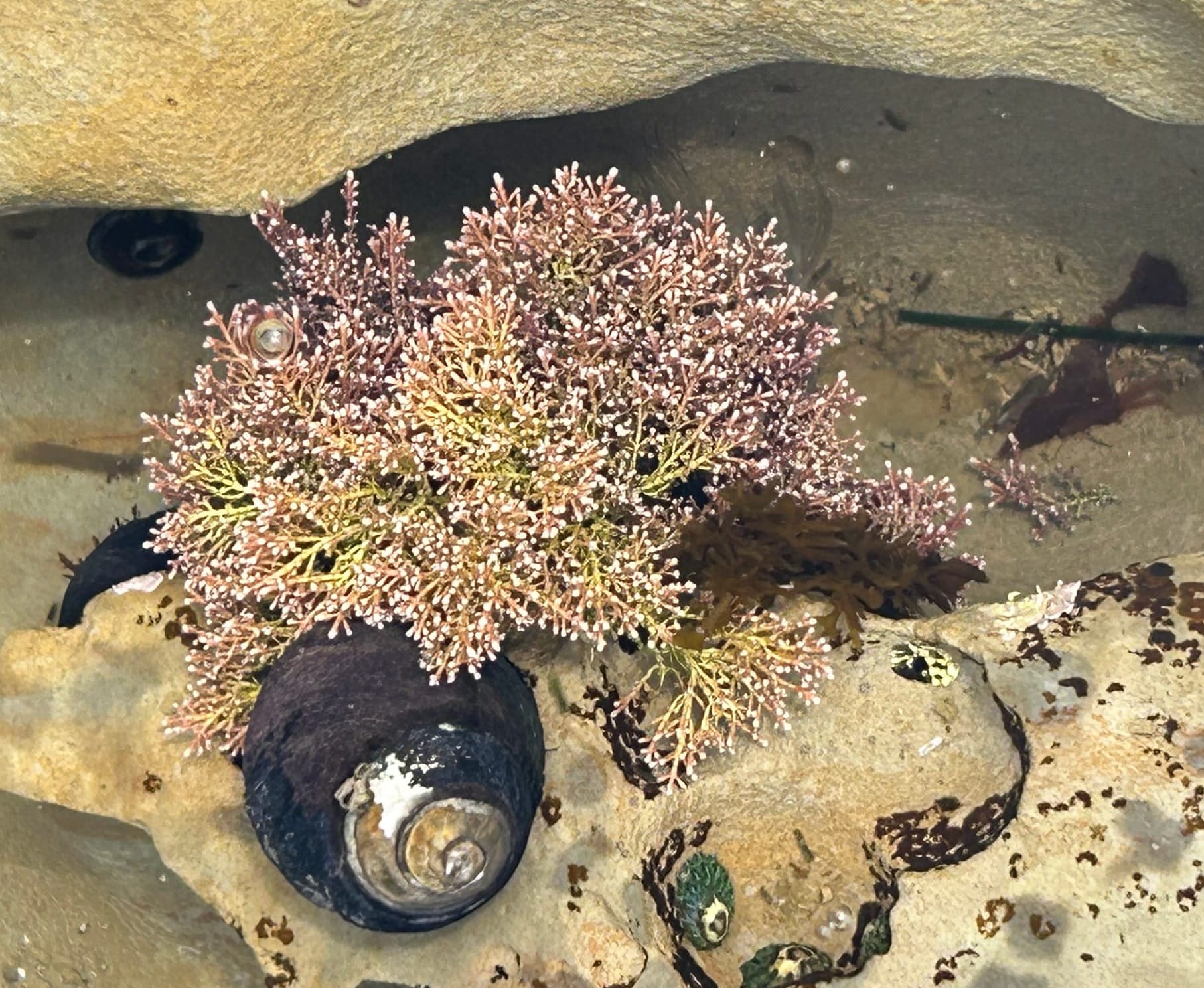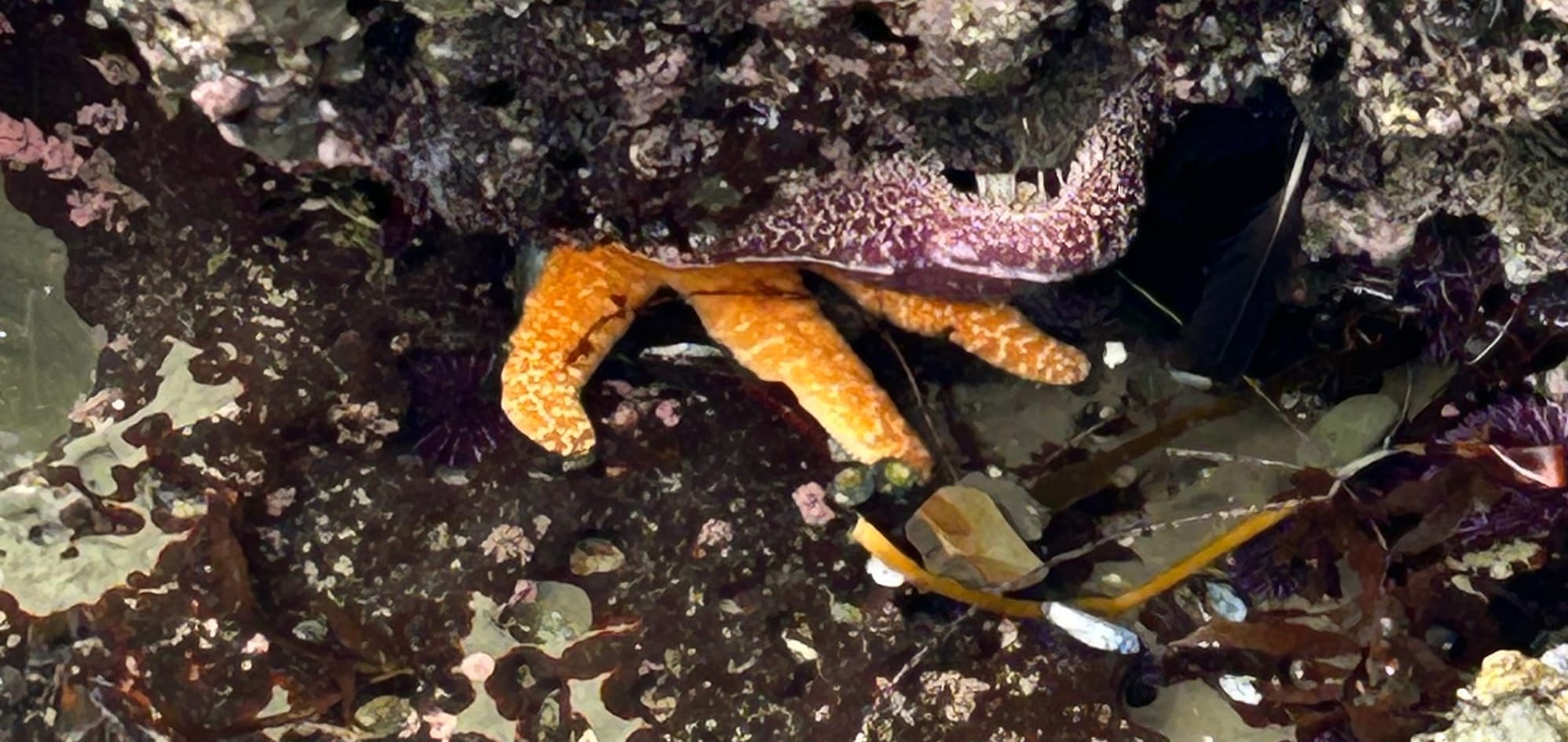Stalking sea creatures

We got a chance to travel to Santa Cruz, CA, adding vacation to a (wonderful!) family wedding. One of our sons had the great idea that we visit tide pools while there. Capitalizing on a little serendipity, this activity turned into an exciting week-long venture—one that could be adapted, with a different focus, to any number of natural settings.
Parental/grandparental aspects of the project started with the ubiquitous search for “things to do with children in the Santa Cruz area.” The discovery of the tide-pooling option did require some digging—the first several hits don’t mention it. We found the information at Visit Santa Cruz County. This type of site, billed as “…a private, non-profit corporation, serving as the official visitor marketing entity for Santa Cruz County,” could be worth searching out on your travels or locally. I’m guessing that such (relatively) non-commercial sites are more likely to direct you to nature-based, low-cost activities. For my Minnesota readers, Explore Minnesota is a similar resource.
Armed with the tide-pooling suggestion, which included descriptions of five local sites—and the minimal information that tide-pooling should be done at low tide—we next figured out tide tables in order to time our trip.
And then some serendipity: It so happened that the AirBnb where we stayed stocked a natural history book about the plants and animals of the northern California coast. My grandson and I spent several hours (a bit at a time) going through the drawings, enjoying the funny common names (like “boring sponge”), and learning quite a bit about identifying sea creatures.

And some more serendipity: The wedding took place at the Seymour Marine Discovery Center, and—having invited kids to the event—the couple also employed one of the naturalists to stay on after hours. This meant that the grandchildren (and excited others!) got to spend lots of time at the Center’s touching pool learning about sea stars, anemones, barnacles, and other creatures. Not only that, the docent’s knowledge of the area pointed us to the best of the tide pools from our original list, at Natural Bridges State Beach adjacent to the Discovery Center.

So by the time we actually went tide-pooling, on the 6th and final day of the trip, we were primed. Our grandson stepped excitedly from pool to pool, accurately identifying giant green anemones, mussels, various snails, purple sea urchins, and sea stars. The abundant crabs made him nervous at first (those pincers!), but he quickly figured out that they were afraid of him and would scatter and hide when he approached. I’ll never forget his excitement: “GRANDMA GRANDPA! Look at this!” “MAMA DADDY! Come see!” I think his greatest discovery was to get down very close to a small pool, where he saw minute orange creatures zipping about. And—more serendipity—a naturalist happened to be nearby to explain that those were copepods, an abundant food source for many of the tidepool creatures.

This was a true multigenerational activity—three generations were excited and awed by the life in the tidepools, and grateful for the chance to observe and learn about it together.
I may or may not get a chance to go tidepooling with a grandchild again, and you may or may not get that specific opportunity. But the general process of finding an intriguing natural setting, learning a little about it in advance, sharing enthusiasm all the way through the venture—THAT you can do on your next trip—or wherever is local to you. And stay attuned to serendipitous opportunities. You never know when it all might click!